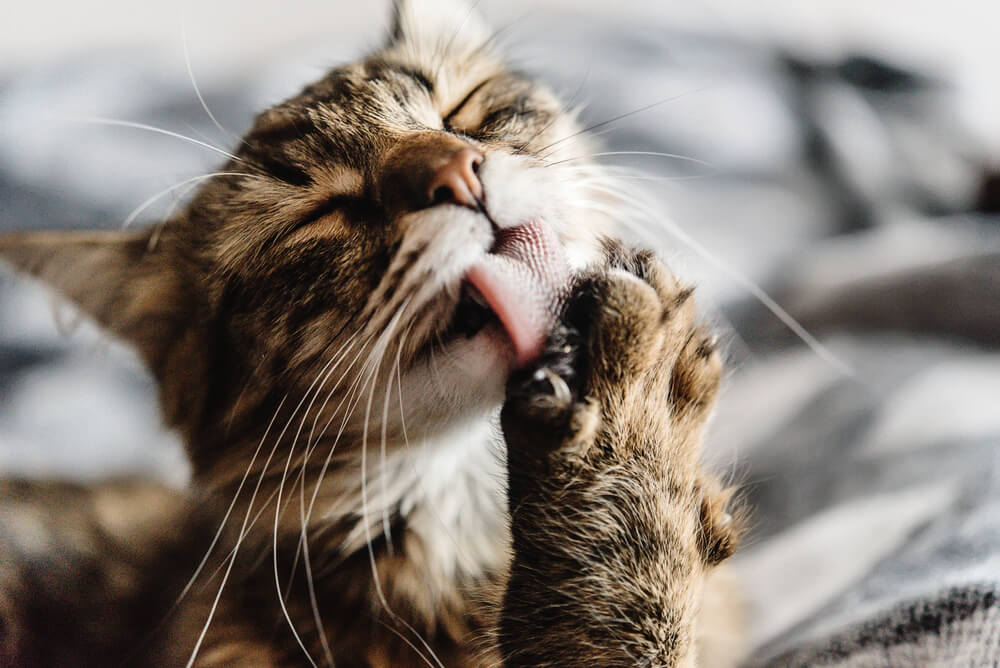
Caring for a cat is one of the most rewarding experiences, but it comes with responsibilities that require both attention and knowledge. Typically, cats live for around fourteen years, but many live for even longer, therefore, being a pet parent is a long-term commitment in terms of care and cost.
Whether you’re a new cat parent feeling a bit overwhelmed or a seasoned cat parent looking to refresh your memory, we’ve developed a guide to cover the essentials of cat care. From feeding and grooming to health care and creating a stimulating environment, you will find all the tools required to be a responsible pet parent.
Finding a vet
One of the first steps in caring for your cat is finding a reliable vet. Regular check-ups are essential to monitor your cat’s health, administer vaccinations, and prevent common issues like worms or ear mites. Additionally, discuss the importance of neutering or spaying your cat, which not only helps control the pet population but also reduces certain health risks.
Cat supplies checklist
Before bringing your cat home, make sure you have all the necessary supplies.
Here’s a basic checklist:
- Feeding dish and water bowl
- Complete and balanced diet (consult with your vet)
- Litter box and litter
- Grooming tools (brushes, nail clippers)
- Toys and scratching posts
- Bedding and housing
- Cat carrier for trips to the vet
- Identification tags and/or microchip
Feeding your cat
A balanced diet is crucial for your cat’s health. Feed your cat high-quality cat food that meets their nutritional needs. Ideally, serve two meals a day, spaced about 12 hours apart. Always provide fresh water, as hydration is key to preventing urinary tract issues.
Grooming your cat
Regular grooming helps keep your cat’s coat healthy and reduces shedding. Brush your cat weekly to remove loose fur and prevent hairballs. For long-haired breeds, daily grooming might be necessary. Don’t forget to trim your cat’s nails and check their ears for signs of mites or infections.
Handling your cat
Cats can be sensitive to handling, so it’s important to know how to pick them up and hold them properly. Support their front legs with one hand and their hindquarters with the other, keeping them close to your body. Avoid squeezing or forcing them into positions they’re uncomfortable with.
Playtime and scratching
Playtime is not just fun; it’s essential for your cat’s physical and mental health. Provide a variety of toys to stimulate their hunting instincts and keep them active. Scratching posts are also important, as they allow your cat to maintain their claws and mark their territory without damaging your furniture.
Housing your cat
Whether your cat is an indoor or outdoor cat, it’s important to provide a safe and comfortable living environment. If your cat is indoors, ensure they have plenty of space to roam and explore. Outdoor cats need a safe space to retreat to, especially at night or in bad weather.
Litter box training
Familiarizing your cat with the litter box is essential, especially for indoor cats. Place the litter box in a quiet, accessible area, and clean it regularly to encourage consistent use. If your cat stops using the litter box, it could be a sign of stress or health issues, so consult your vet if this occurs.
Establishing a routine
Cats thrive on routine, so try to keep feeding, grooming, and playtime schedules consistent. This helps reduce stress and ensures your cat knows what to expect each day. A regular routine is especially important for indoor cats, as it provides structure and reduces the likelihood of behavioral issues.
Indoor cat care tips
Indoor cats require extra stimulation to keep them mentally and physically healthy. Make sure they have access to windows, climbing trees, and interactive toys. Rotate toys regularly to keep things interesting, and spend quality time engaging with your cat every day.
What not to do when taking care of a cat
While it’s important to know what to do, it’s equally important to know what not to do. Avoid feeding your cat human food, as many common foods can be toxic to cats. Never force your cat to do something they’re uncomfortable with, as this can lead to stress and behavioral issues. Also, avoid skipping regular vet visits, even if your cat seems healthy—prevention is key.
Letting your cat outdoors
If you choose to let your cat outside, ensure they are microchipped and have proper identification. Monitor their outdoor activities, especially during the first few outings. Some cats may bring home “gifts” like birds or mice, which is a natural behavior. If you prefer your cat to stay indoors, make sure to provide enough stimulation to satisfy their hunting instincts.
Worming, ear mites, and neutering
Regular worming is crucial for preventing internal parasites, which can be harmful to both your cat and your family. Check your cat’s ears regularly for signs of mites, which can cause discomfort and infections.
We uphold the highest editorial standards when creating the authoritative content pet parents rely on and trust.
Every piece of clinical content on the Cat Food Advisor is reviewed by our certified Veterinary Advisory Board, which consists of licensed veterinarians and medically certified specialists.
Our reviews are completely independent; we are not paid by any pet food company to promote their products favorably. We do not accept money, gifts, samples or other incentives in exchange for special consideration. For more information see our Disclaimer & Disclosure page.










